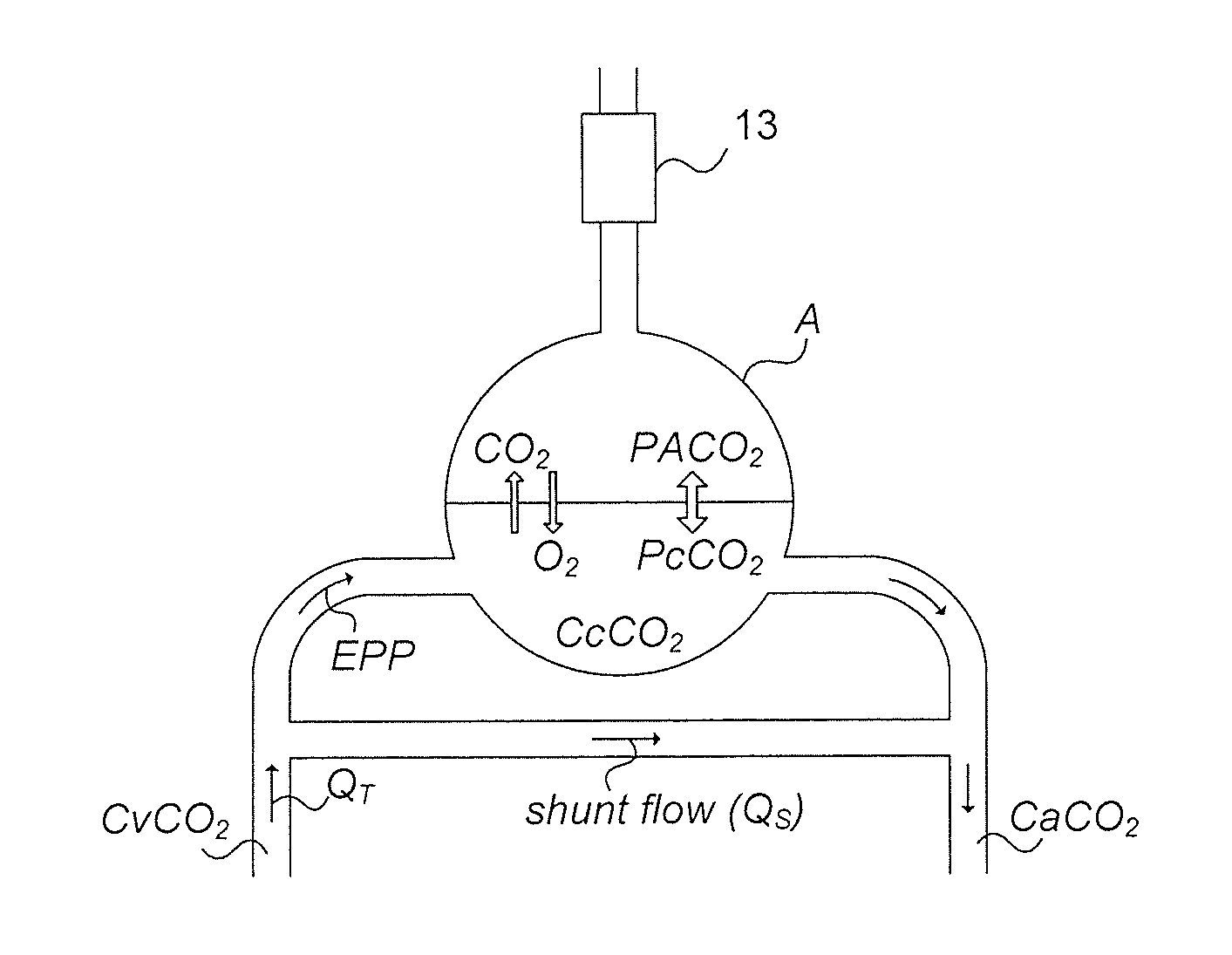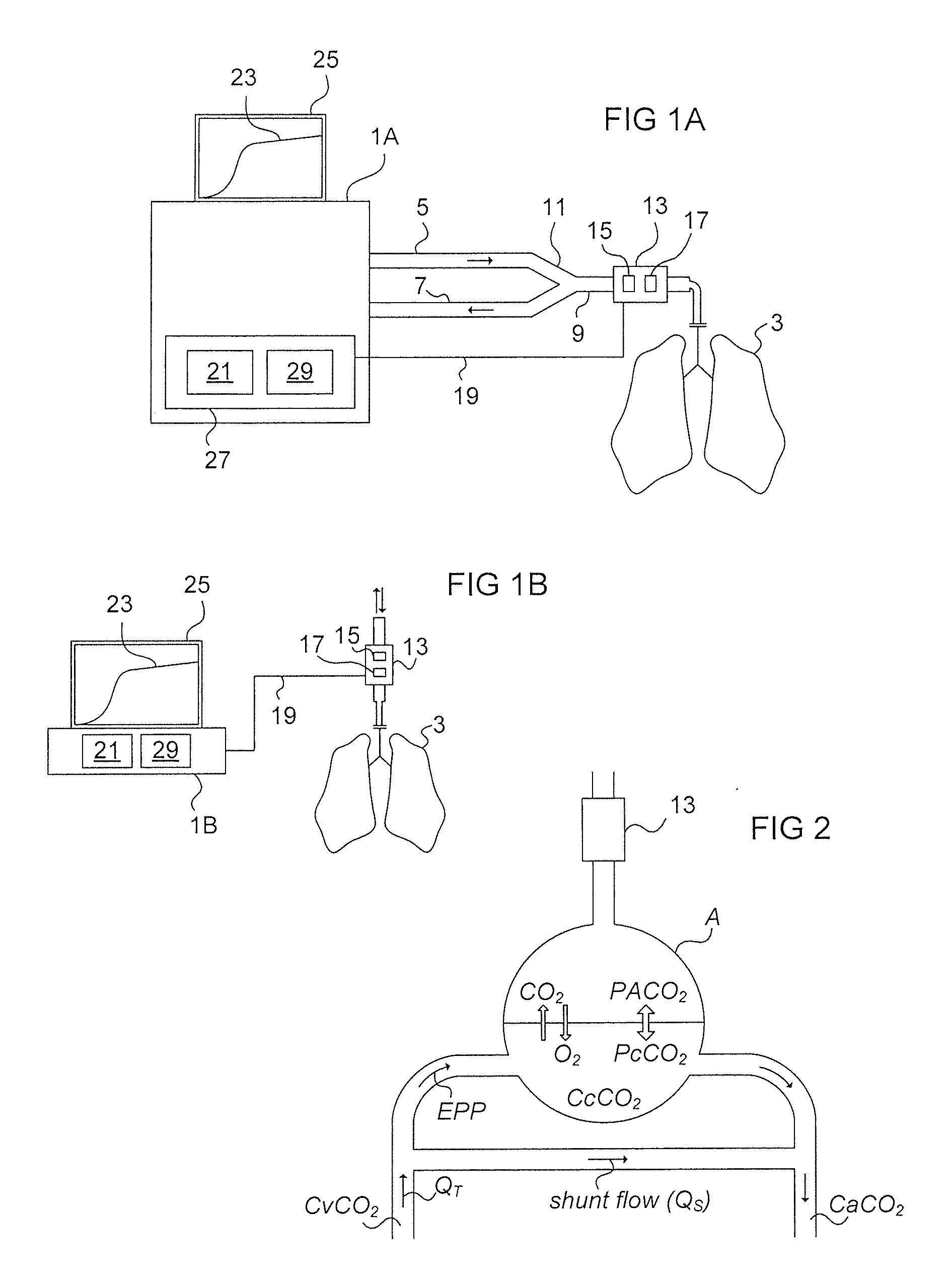Method and apparatus for estimating shunt
- Summary
- Abstract
- Description
- Claims
- Application Information
AI Technical Summary
Benefits of technology
Problems solved by technology
Method used
Image
Examples
Embodiment Construction
[0087]FIG. 1A illustrates an apparatus 1A according to an exemplary embodiment of the invention. In this embodiment the apparatus is a ventilator for providing ventilatory treatment to a patient 3 connected to the ventilator. The ventilator is connected to the patient 3 via an inspiratory line 5 for supplying breathing gas to the patient 3, and an expiratory line 7 for conveying expiration gas away from the patient 3. The inspiratory line 5 and the expiratory line 7 are connected to a common line 9, via a so called Y-piece 11, which common line is connected to the patient 3 via a patient connector, such as an endotracheal tube.
[0088]A capnograph 13 configured for volumetric capnography measurements is arranged in the proximity of the airways opening of the patient 3. In this exemplary embodiment, the capnograph 13 is arranged in the common line 9 and exposed to all gas expired and inspired by the patient 3. The capnograph 13 comprises a flow or volume sensor 15 for measuring at leas...
PUM
 Login to View More
Login to View More Abstract
Description
Claims
Application Information
 Login to View More
Login to View More - R&D
- Intellectual Property
- Life Sciences
- Materials
- Tech Scout
- Unparalleled Data Quality
- Higher Quality Content
- 60% Fewer Hallucinations
Browse by: Latest US Patents, China's latest patents, Technical Efficacy Thesaurus, Application Domain, Technology Topic, Popular Technical Reports.
© 2025 PatSnap. All rights reserved.Legal|Privacy policy|Modern Slavery Act Transparency Statement|Sitemap|About US| Contact US: help@patsnap.com



